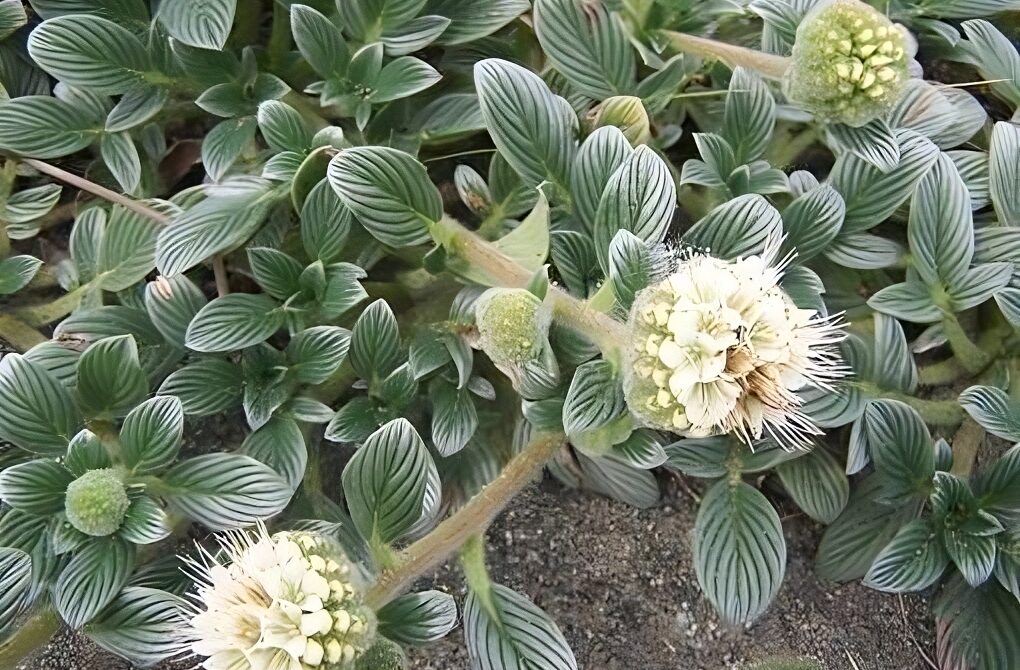Resources > News
Threatened Shoreline Plants Need Protection

Efforts to protect certain threatened or endangered species of the coastal region are well known. Gray whales and Bald eagles have, happily, thrived enough thanks to conservation efforts that they are no longer listed. Oregon Shores has supported the work that has gone into recovering the population of beach-nesting Western snowy plovers for decades now; here again, the happy result is that the snowy plover’s numbers have significantly increased. We have also supported efforts to protect habitat for the Marbled murrelet, an old-growth-nesting seabird. Most people are aware that some runs of salmon, such as the Coastal coho, are endangered or threatened.
Plants of the Oregon shoreline aren’t nearly so visible, and campaigns to preserve populations at risk don’t receive much publicity. However, if we are to protect the natural environment of the Oregon coast, we must include in our vision the plants that are menaced by development, recreational activities, and the spread of European beachgrass, obliterating dune habitats.
Here are the stories of two coastal plants, one newly protected, the other in great need of official listing.
After nine years of pressuring the U.S. Fish and Wildlife Service, conservationists have finally achieved official listing of the sand dune phacelia (sometimes called Silvery phacelia) as a threatened species under the Endangered Species Act. The agency also designated 180 acres as protected critical habitat for the plant in 13 areas in Coos and Curry counties in southern Oregon and Del Norte County in California.
That designation will raise awareness of the plants, and it means that, with a few exceptions, the plants cannot be removed, cut, collected or damaged without consultation and a permit. It marks a step toward restoration of coastal dunes.
About 90% of the plant’s natural habitat in Oregon has been altered, with the phacelia damaged by off-road vehicles and edged out by invasive species such as European beachgrass and gorse. Restoring the ecosystem will involve removing invasive plants which artificially stabilize dunes, allowing them to naturally move and shift. Once widespread across coastal dunes in southern Oregon and northern California, the plant had dwindled to 25 small populations. Some, such as the one at Cape Blanco, contain fewer than 25 individuals.
Silvery phacelia–known botanically as Phacelia argentea–is part of the Forget-Me-Not family of plants and can grow as tall as 18 inches. Its fleshy leaves are coated with long, straight silvery hairs, and it produces small white or cream-colored flowers that bloom from spring through summer. Bee magnets, plants are laden with nectar and pollen. Studies show that the number and species of bees increase in areas where they grow.
The plant requires areas relatively free of competing vegetation and is adapted to surviving in nutrient-poor sand dune areas with high winds, blowing sand and salt spray. Its silvery hairs, an adaptation to the harsh coastal environment, keep salt off its leaves, decrease water loss and reflect excess light. To survive, the plant will require continuous removal of gorse and European beachgrass, which was introduced to stabilize the dunes. Rising sea levels caused by climate change are expected to exacerbate the spread of invasive plants, resulting in additional habitat loss.
A species that occupies a similar habitat but has not yet received special protection is the Dark-eyed Gilia (also known as the Manyleaf Gilia). Gilia millefoliata is a species of flowering plant in the Phlox family. It is native to the coastlines of southern Oregon and northern California, where is grows in sand dunes.
This wildflower grows a branching stem reaching maximum heights near 30 centimeters. The stem is dark green with some red coloration and is covered in abundant glandular hairs. The fleshy leaves are mainly located in a basal rosette at the ground, and they are sparsely scattered along the stem as well. In its brief flowering, it sports small clusters of blooms, up to a centimeter wide, generally lavender to purpose with a white or yellowish throat.
The Dark-eyed Gilia was known historically from San Francisco to Lincoln County, Oregon but it currently ranges from Point Reyes in Marin County, California north to the vicinity of Laurel Lake in Coos County.
Botanists label this species “Imperiled,” and the Oregon population “Severely Imperiled.” But it is not now listed as endangered or threatened under the Endangered Species Act, which is clearly a step that needs to occur.
As Oregon Shores works to preserve our beaches and dunes, we also work to preserve the species that belong there.
